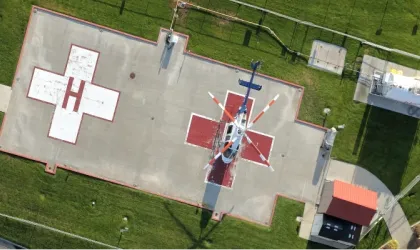
HIGH-PERFORMANCE CONNECTIVITY FOR ENTERPRISE
ROBUST COMMUNICATIONS ARE ESSENTIAL FOR BUSINESS
Reliable connectivity is now essential to business, even in remote or underserved areas. Companies depend on network resilience, security and data assurance to safeguard operations, protect customers and support critical applications.
- Gathering, transmitting and processing data from remote, sometimes unmanned, sites to facilitate monitoring, real-time analysis and decision-making
- Connecting to cloud computing services to access stored data and data processing capabilities remotely
- Accessing stored data to deliver personalised, reliable, secure services to customers
- Using communications services to connect to business applications including payment processing

ENTERPRISE-GRADE SATELLITE CONNECTIVITY EVERYWHERE
We adapt our unique satellite network infrastructure, plans and features to the specific enterprise-grade requirements of our customers.
GLOBAL COVERAGE
Worldwide satellite coverage offers primary or backup communications for fixed and mobile applications even in rural, remote or underserved locations.
FLEXIBLE
Dynamic service management tools plus flexible packages adapt to demand and scale to your requirements
ROBUST
Ruggedized hardware installed by certified service providers for continuity and low-maintenance.
SECURE
Multi-orbit solutions, private network compatibility ensure exceptional performance and redundancy
QUALITY OF SERVICE
Service-level agreements including with Committed Information Rate and Maximum Information Rate options
POWERING ENTERPRISE ACROSS EVERY SECTOR
At Eutelsat, our teams are based around the world and work closely with a network of specialised, certified distribution partners to ensure you get the best advice on installations, equipment and service activation.
Together, we deliver together a service portfolio that includes pure network capacity, as well as flexible packages and managed services. We tailor our enterprise-grade satellite connectivity solutions to integrate with your network and IT set-up to ensure the best performance and quality of service for your business, staff and customers.

POWERING ENTERPRISE ACROSS EVERY SECTOR

Community WiFi
Deliver affordable Internet and network access to underserved locations, narrowing the digital divide.

Education
Extend reliable broadband Internet services to schools and training centres in underserved or remote communities.

Energy
Leverage resilient connectivity for data-gathering, critical applications and communication channels in all weathers and terrains.

Healthcare
Access centralised healthcare systems and open telehealth services for patients in rural and underserved communities.

Mining
Deploy connectivity to remote sites for exploration, automations and asset-tracking deep in the field.

Rail & Road
Connect to integrated systems on the move and to transport infrastructure, improving communications for passengers and personnel.

Retail & Banking
Leverage connectivity for retail & banking services including latency sensitive applications.